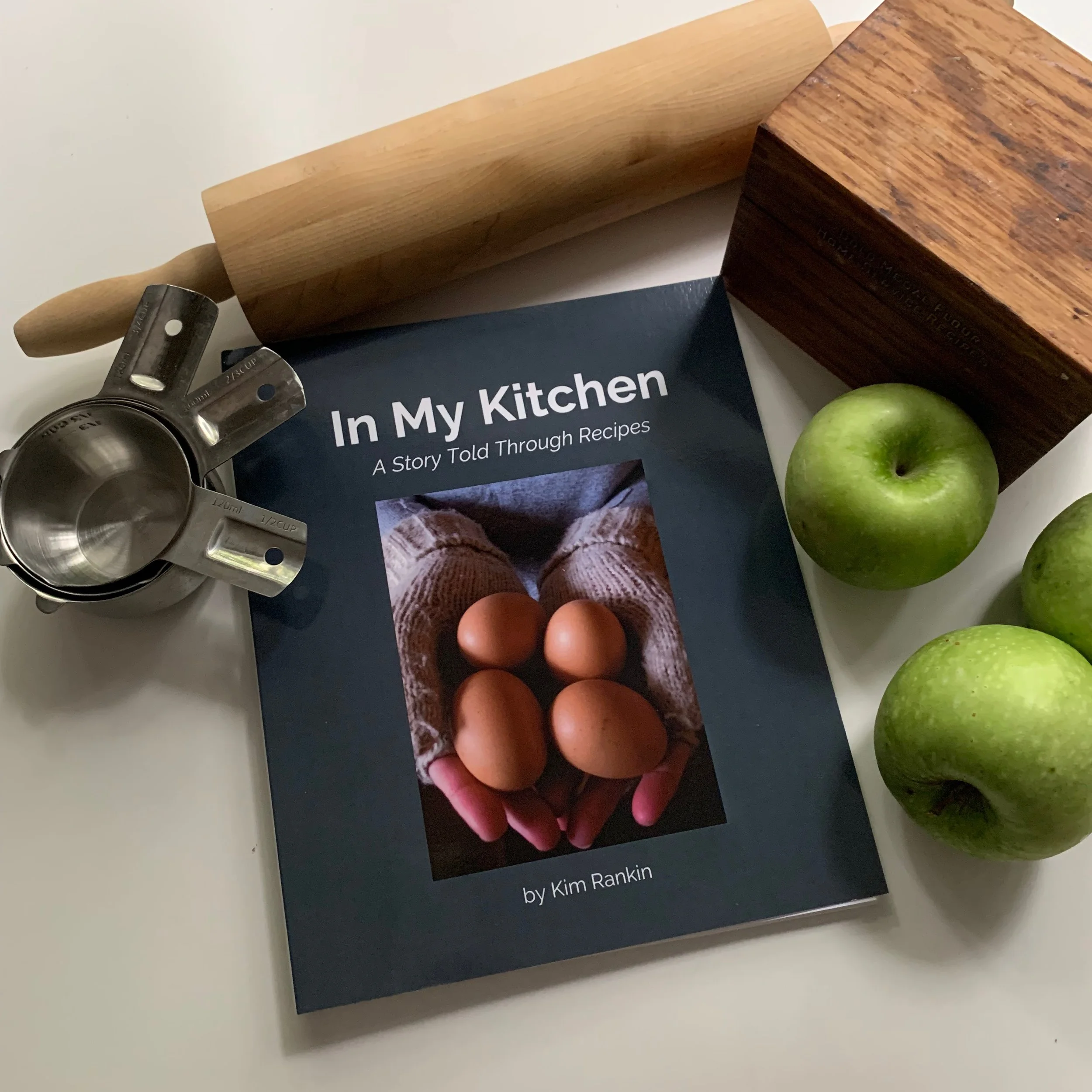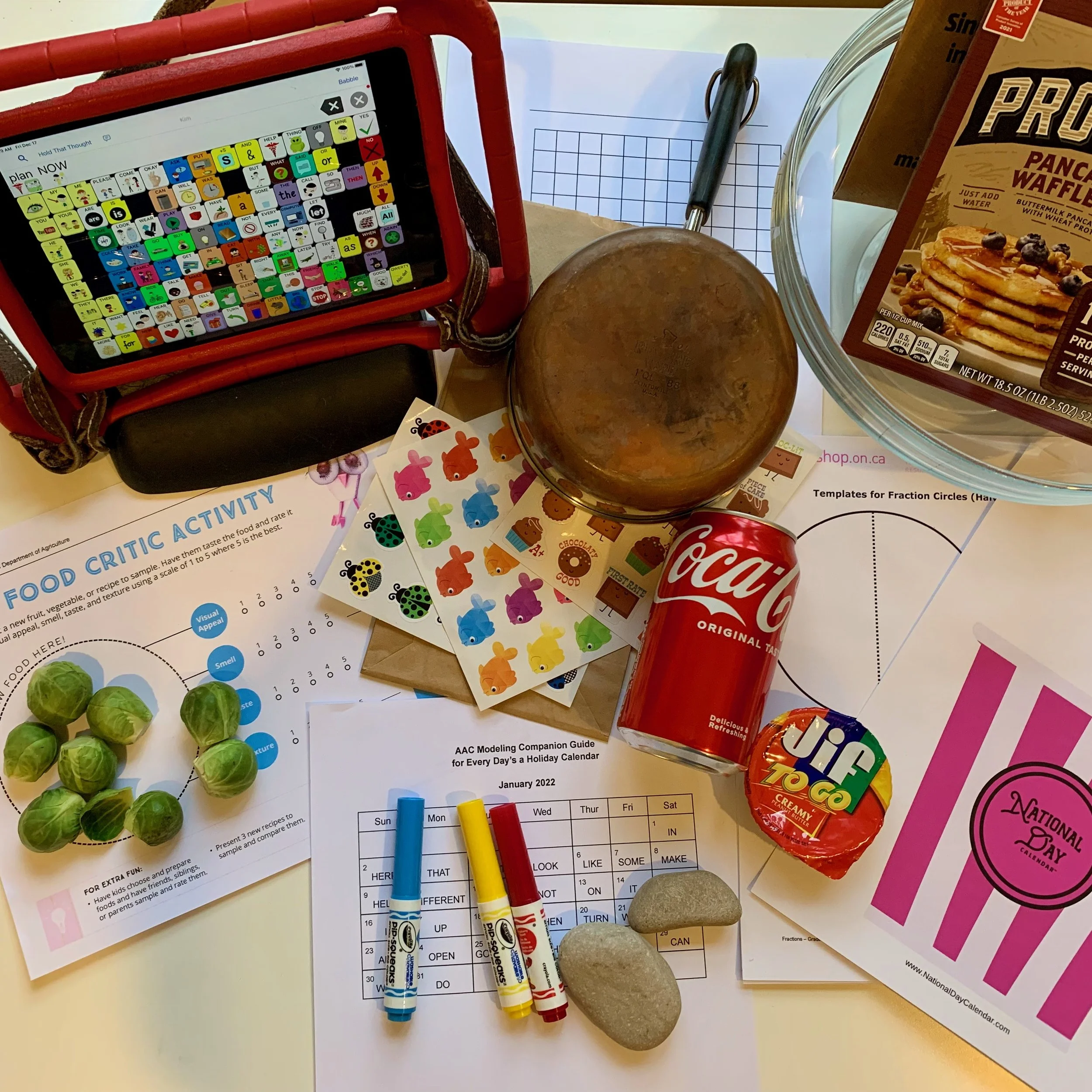My Cookbook! An Excerpt and Recipe
I completed a fun project in 2021; I wrote a cookbook! It also kind of feels like I wrote a brief memoir, at least a memoir of my life as a cook. I organized the recipes by the kitchens of our homes and wrote about our experiences in each. Most recipes also included a paragraph or so explaining where I originally found the recipe, how often I served it, and who liked or disliked it. I wrote the cookbook with a small audience in mind: my children, siblings, and parents and gave a copy to each of them. I included photos of our family cooking, baking, and eating together. The result was an intimate reflection on our family life and my efforts as a mother and homemaker. Like preparing endless meals for my family, putting the recipes and my reflections down on paper felt vulnerable. “Will they like this?” I wondered over and over as I was writing. Their reception was more than I could have ever asked for - a gift in return.
As with other things I’ve written, after writing there is a pondering about the work. Is it done or just the start of something more? I can’t answer that yet about the cookbook. But I know for now, despite requests from friends for a copy, I want to keep the book as created just for my family. Here is one essay, the description of our Eastview home’s kitchen and what it meant to me to cook there. Below the essay is the mashed potato recipe that I have made every Thanksgiving for two decades. Happy Thanksgiving, friends.
A Common Kitchen
Eastview was the last house that the real estate agent showed us on a spring Saturday in 2004. I walked into the kitchen from the dining room side; Rich entered from the hallway. We met in the center of the room. I asked him, “Can you fix this?”
The kitchen’s layout, built in furnishings, and color combos were dated to two eras simultaneously in ways that jarred my desire for a beautiful space. Fragments of its original mid-century design elements remained. A cafe booth, its seat and back benches covered in orange vinyl and previous families’ daily grime, sat beneath a wood shuttered window. A hutch separated the cafe booth from the home’s dining room. It was a rectangular orange-stained wood monstrosity suspended between floor and ceiling with three black one by four boards. An angular decorative feature hanging off the stairwell ceiling further dated the overall room’s design to the 1950’s. Collectively the features created a heaviness that lights could not dispel.
The kitchen work area, reflecting changes from the 1970’s was contained between the back of one cafe booth bench and wall where the fridge and stove sat side by side. Thin brick tiles filled the backsplash area between a handful of upper and lower cabinets. The door and drawer fronts were resurfaced with wood-toned formica. The kitchen was hideous to look at, but even worse, it would have stifled the communal space I felt we needed as the children entered their teen years: space for me to cook large amounts of food, room to entertain, and a margin where the children and their friends could explore kitchen work for themselves.
Rich understood my “Can you fix this?” immediately and had anticipated the need in the early 1990’s when he had stumbled upon a full set of kitchen cabinets sitting along the roadside. While dated to probably the 1970’s themselves, he recognized the craftsmanship in the solid maple boxes and door fronts, a craftsmanship that was on its way out. At the time, they were a sign of hope that one day we would move beyond where we were living, the basement apartment in his parent’s home. Something that with Rich’s income supporting us could only happen with his labor in a house that needed fixing up. He brought the cabinets back to his parents’ garage. A month or so later, we arranged to keep them at Grandma Elaine’s parents’ home. With the salvaged cabinets stored, we were now ready for whatever ugly kitchen came our way. Rich had kept a yellow post-it note list of the cabinets’ dimensions in his underwear drawer since the day he found them. Now years later, after seeing the Eastview house, our family’s ingenious carpenter planned a new kitchen using all but one of the nineteen cabinets.
As a sign of how important the kitchen was, we gutted it within days of closing on the property. We took the cafe booth to the basement family room and disposed of the hutch and decorative overhang. Working with the rescued cabinets, left-over stair balusters from Rich’s work, a hand-me-down double wall oven and cooktop from church friends, a gifted dishwasher, a new countertop, and new ceramic tile flooring, we created a large open kitchen that flowed into the dining room. I loved the endless countertops, the feature of a breakfast bar, and the three stools that we splurged on. I removed shutters and invited the lush backyard into the home with intentionally drapeless windows. I painted the walls a green color called Thyme. It was a foreshadowing of the hours I would spend in the space making food for our family and guests.
The opportunity to gut a kitchen and start afresh from bare walls and floors could have resulted in a magazine worthy end result if such were dependent on Rich’s labor alone. But the constraints of using budget friendly and cobbled together elements likely produced another era-straddling kitchen that didn’t fit the house. My gradual efforts over time to change decorations, paint color, and trim moldings revealed my uncertainty in claiming one style and building on it. I never fell in love with the Eastview kitchen in a physical sense. But I loved what happened in that kitchen over the almost two decades that our family lived in the home.
I loved the sixteenth birthday parties that gave way to late night champagne toasts after an engagement. I enjoyed yelling “time to eat” down the newly opened basement stairs to long-legged, smelly teens and their friends trapped in video games. I tolerated the mud left behind after paintball wars in the backyard. I welcomed the handstands on the countertop and the classes of homeschool students doing animal organ dissections at the breakfast bar. I relished slow dancing away our septic system blues in the kitchen’s narrow middle. And how Rich’s and my late night dancing in the kitchen evolved to practicing his father-daughter or my mother-son dances for weddings.
In the Eastview kitchen I watched boys grow up to become business owners, siblings find adult friendship, and friends rest from weary lives. I served alcohol and regretted it. I reached for grace when faced with ungratefulness. I fought. I apologized. I paced in that kitchen, quieting my first granddaughter and mourning the loss of my first grandsons. I prayed and pleaded with, worshipped and wrestled with God in the Eastview kitchen. Perhaps the very influence of the kitchen’s unmatched design gave permission for the imperfect living that is common to every family. The Eastview kitchen was very much a common place. It was not glamorous. It did the job of providing a place to cook food. The recipes I made and parties I hosted tell a great deal of how I evolved as a cook while living there. But the food was the least of that kitchen’s or my accomplishments. The opportunity that the Eastview kitchen provided me to love people was anything but common. The place transformed my life and thus influenced our story as a family.
Make Ahead Mashed Potatoes
Serves 8
Ingredients:
10 large potatoes, peeled and quartered
1 cup sour cream
8 ounces cream cheese
6 tablespoons butter
2 tablespoons dried minced onion
1 teaspoon salt
1 teaspoon paprika
Directions:
1. Boil potatoes in water until soft. Drain water and mash in pot.
2. Add sour cream, cream cheese, 4 tablespoons butter, dried minced onion, and salt. Mix with hand beater until things are melted and smooth.
3. Spread in greased 13x9 casserole dish.
4. Melt remaining butter, drizzle over potatoes. Sprinkle with paprika. Cover with aluminum foil.
5. Refrigerate until time to bake or bake immediately. Baking directions: bake covered at 350 degrees for 40 minutes. Uncover and bake 20 minutes longer.






